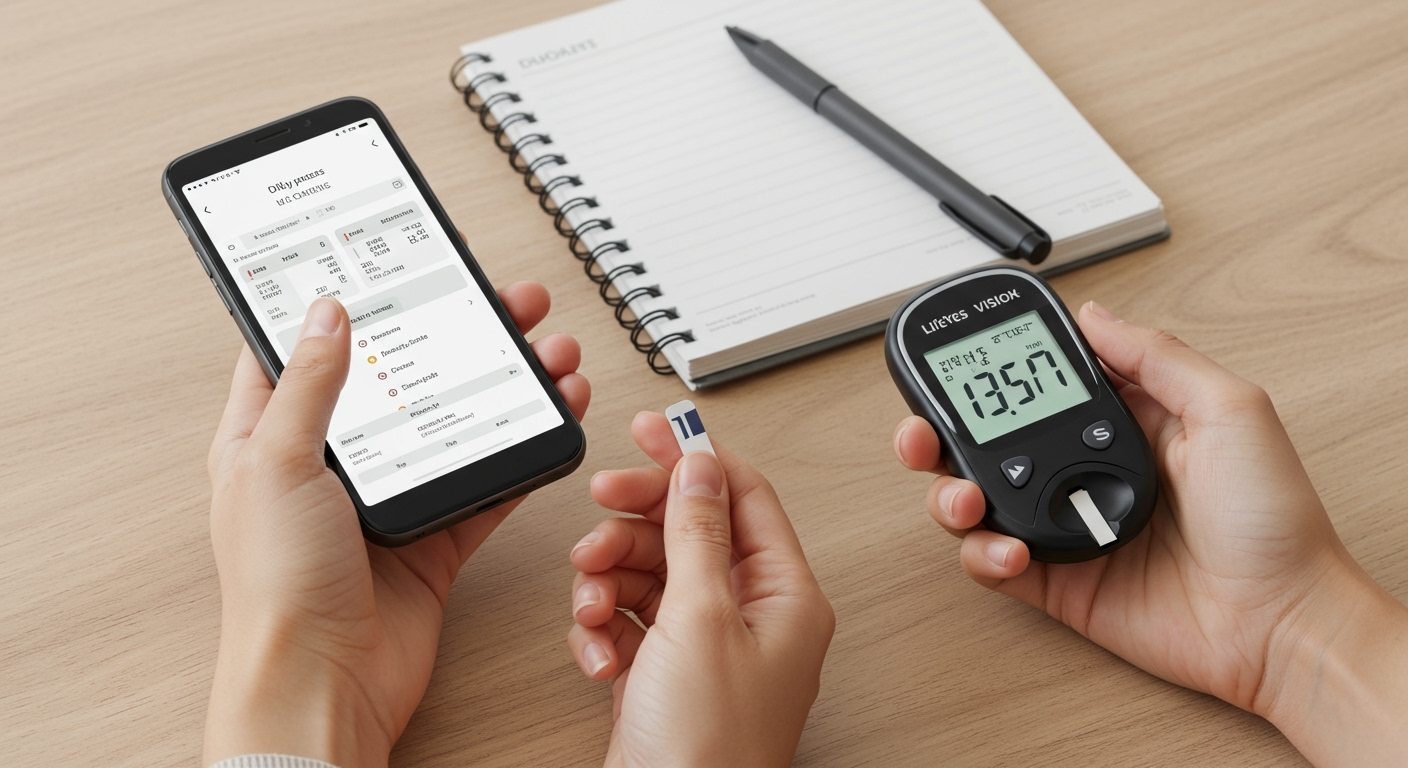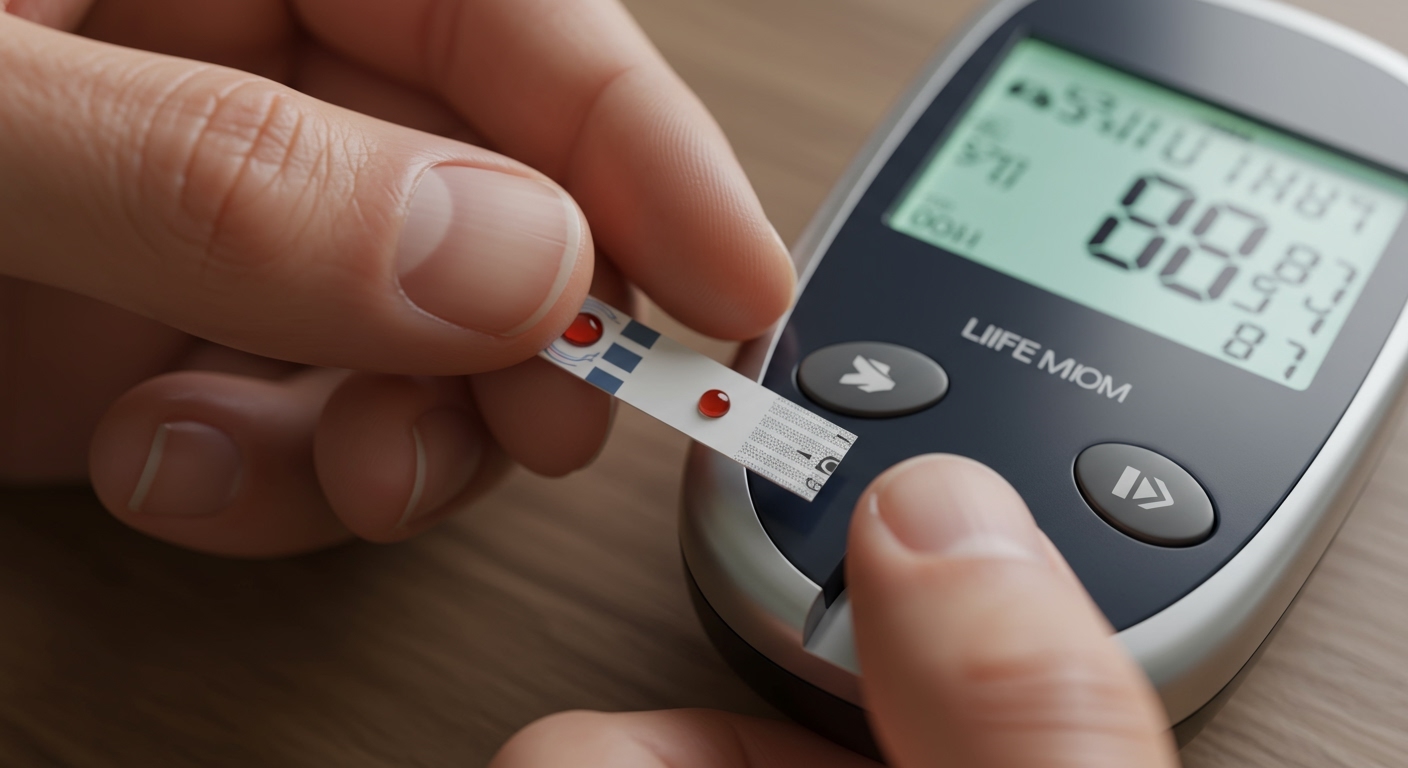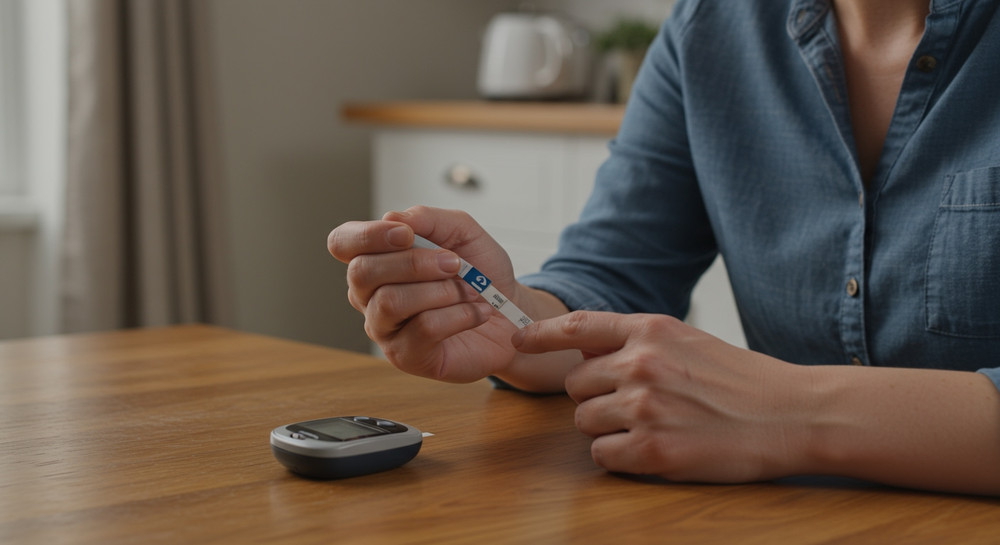A Beginner’s Guide to Blood Glucose Test Strips
Oct 22nd 2025
Self-care of diabetes is based on proper testing equipment. Blood glucose test strips are one of the most valuable among them. These small strips help people measure their blood sugar levels anytime. The Centers for Disease Control and Prevention (CDC) reported that approximately 38 million Americans are diabetic. Regular testing can assist them in the process of monitoring safe sugar levels and avoiding complications. Each test strip might look simple, but it carries advanced science within it. They are key parts of home-based medical care and daily health management. This guide will also link to other diagnostic instruments and supplies used in home testing.

How Do Test Strips Work?
The sugar levels are measured by a special chemical reaction in the blood glucose test strips. As soon as an individual puts a small drop of blood on the strip, enzymes start to react. One common enzyme, known as glucose oxidase, reacts with the glucose molecules in the sample. This response generates a minor current that can be read by a meter. The glucose meter strips then send this signal to the device. The meter converts that signal into a clear number shown on its screen. That number tells how high or low the sugar level is.
This process shows how technology makes health checks fast and reliable. These strips are excellent examples of modern diagnostic tools used in homes every day. To ensure accurate readings, users can apply control solutions. These solutions, such as control solution options, verify that the meter and strips work properly. Every reading depends on the correct reaction between the blood and the enzymes inside the strip. That is why handling them carefully and following instructions is very important.
Choosing the Right Strips for Your Meter
Each glucose meter model works with specific glucose meter strips only. Meters and strips are designed to match each other’s calibration. The wrong type could lead to errors or incorrect outcomes. The U.S Food and Drug Administration (FDA) does not approve diabetic test strips without accuracy testing. Users should always check that the strip box lists their meter model. Buying the wrong pack wastes money and may affect health tracking.
Before purchase, confirm compatibility to avoid false results or device errors. It is also helpful to look at glucose monitoring systems that show compatible strip types. Some health monitoring setups allow pairing multiple tools for convenience. To obtain a consistent reading, select strips that match your meter exactly. This will provide proper calibration and steady long term accuracy.
Why Brand Compatibility is Crucial
When diabetes testing strips do not match the meter brand, results may vary widely. Even a small mismatch can cause differences of 10–15% in readings. These errors can lead to incorrect insulin doses or delayed medical action. Electrical signals between the strip and meter must match perfectly for accuracy. That is why using strips designed for a specific meter is essential.
For example, see this test strip product reference showing proper compatibility details. These strips are tested to meet FDA accuracy standards for home use. Calibration ensures that both the strip and meter communicate correctly. When users maintain brand compatibility, they can trust every reading. This reliability helps manage diabetes with confidence and consistency over time.
How to Store Test Strips Correctly
It is equally important to store blood glucose test strips in the right places as well as to use them in the right ways. These strips are humidity, heat, and sunlight sensitive. Exposure to these conditions may damage the chemicals inside and cause errors. Strips should be stored in their original containers after opening. Do not keep them near windows, stoves, or bathrooms.
Ideal storage temperature is 46°F to 86°F. Adhere to these requirements to ensure accuracy in readings. The American Diabetes Association (ADA) recommends the use of opened containers for 3-6 months. This is to aid a consistent output in the long run. Always write the opening date on the container for tracking.
To help manage storage and other maintenance items, visit this diagnostic instruments and supplies catalog. Proper handling and care reduce waste and improve long-term accuracy. Expired strips or exposed strips often lead to “error” messages on meters. Keep a habit of checking expiry dates regularly.
Understanding and Avoiding Error Codes
Many people experience confusion when a meter displays an error code. These codes show when something has gone wrong in the reading process. Common causes include insufficient blood, expired diabetic test strips, or meter malfunction. Every glucose meter has its own set of error messages explained in its manual. Some meters also have sound alerts for easier understanding.
For example, a talking meter can help visually impaired users understand errors. This works like other digital diagnostic tools, such as a talking wrist blood pressure monitor. These are beneficial tools that enhance the everyday self-care and safety of diabetes patients. Every time, to avoid mistakes, it is better to follow these simple steps:
- Always check strip expiry dates before testing.
- Apply enough blood to cover the test area fully.
- Use only clean, dry fingers during testing.
- Keep the meter and strips away from moisture.
- Perform control tests regularly with control solutions.
If you still face frequent errors, it may mean the strips or meter need replacement. Check whether it is the device or the strips by using control solutions, e.g., control fluid. In case of inaccurate readings, seek the advice of your health practitioner or your pharmacist.
Why Consistent Testing Matters
Regular check up will assist in detecting both high and low sugar levels. Hypoglycemia or low sugar is probably harmful when it is unnoticed. These changes can also be better monitored by using low test strips. Individuals engaging in daily tests get to know their body patterns better. Frequent monitoring promotes proper dosage of medication and healthy lifestyle adjustments.
The correct use of the appropriate diabetes testing strips and storage practices is also important. Diabetes management becomes easier when the testing is a routine. Reliable information allows physicians more confidence in adjusting treatments.
Caring for and Handling Strips
Each box of blood glucose test strips has instructions on handling. One is not supposed to touch the test area using dirty or wet hands. Always insert the strip properly into the meter before applying blood. Close the container immediately after removing a strip to protect the others. Exposure to air may impact enzyme quality and lead to errors. These are the few habits to have long-term effects:
- Strips should be kept in a dry, cool place.
- Extreme temperature and humidity changes should be avoided.
- Never transfer strips into another container.
- Check the expiry date before every test.
Using easy touch glucose test strips makes daily testing simple and comfortable. Their soft design helps minimize pain during pricking. Small changes in daily care can make big differences in test accuracy.

Advancements in Test Strip Technology
Modern blood glucose test strips are getting smaller and more efficient. They now need less blood to produce accurate readings. Some even connect with smartphone apps to track daily records. Glucose meter strip technology is improving in terms of accuracy and convenience.
The smarter meters can store data and share it directly with the healthcare providers. The connection between test strips and digital monitoring makes management simpler. Such updates also help the user to understand trends over time. With the development of technologies, managing diabetes at home becomes less complicated and even safer.
Conclusion
Blood glucose test strips can be of a very small size, yet they are of excellent use in the management of diabetes. When properly used, they help their user to maintain normal blood sugar levels. Regular and accurate readings support better health and fewer complications. Proper storage, meter compatibility, and consistent usage all matter equally. These habits make every test reliable and meaningful.
As technology continues to evolve, diabetes testing strips will become even more precise. Combined with smart meters, they improve self-monitoring and confidence in diabetes control. People who understand how to use and care for their strips benefit most. Each test brings them closer to stable, healthy living every day.
For more learning, explore detailed guides about glucose monitoring systems and home testing tools. You can find helpful information about different meters, compatible strips, and control solutions. Compare features to choose what suits your lifestyle and needs best. Visit Arpovo Health to view diagnostic instruments and supplies for more guidance and information.

